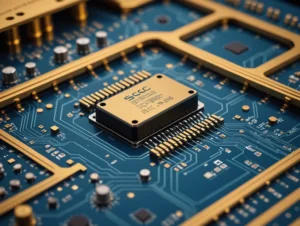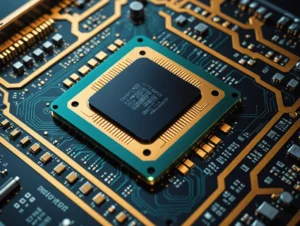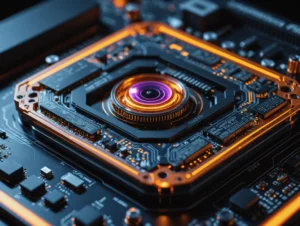Silicon photonics has emerged as a transformative technology, reshaping the landscape of data communication and bringing innovative solutions to a wide range of applications. While its primary use today is in data communication, silicon photonics is steadily making inroads into several other fields, such as biosensing, LIDAR, and radio-frequency integration.
Data Communication: The Primary Driver
At the forefront of silicon photonics applications is data communication, a sector that relies on the technology’s ability to transmit large amounts of data at high speeds. Silicon photonics enables high-bandwidth digital communication systems, such as those used for short-reach and long-reach applications. In short-reach scenarios, such as within data centers and high-performance computing systems, silicon photonics supports complex modulation schemes and high-data-rate transmission, addressing the growing demand for data processing.
The use of silicon photonics in coherent communication is particularly noteworthy for long-distance data transmission. Here, coherent communication techniques optimize signal integrity over long-reach applications, allowing for the transmission of data at terabit speeds. This makes silicon photonics a strong candidate for high-volume data applications, where traditional copper-based technologies fall short.
A pivotal feature of silicon photonics in data communication is the integration of different components—modulators, detectors, waveguides, amplifiers, and transistors—into a single chip. By consolidating all these functionalities, the technology significantly reduces the size, power consumption, and cost of communication systems. This has resulted in the development of on-chip optical communication platforms that can effectively handle point-to-point data transfer within and between large data centers.
Emerging Applications Beyond Data Communication
While data communication remains the primary market driver for silicon photonics, the technology is expanding into several emerging applications:
- Biosensing: Silicon photonics is being explored for advanced biosensing applications, especially in medical diagnostics. The technology’s precision and ability to detect light-matter interactions at the nano-scale make it ideal for applications like biosensing chips and point-of-care diagnostic devices.
- LIDAR Systems: LIDAR (Light Detection and Ranging) systems, which are critical for applications in autonomous vehicles and geospatial mapping, benefit from silicon photonics’ high precision and ability to handle vast data streams. The integration of silicon photonics into LIDAR systems promises lower costs and more compact designs, making it a viable alternative to traditional LIDAR technology.
- Optical Gyroscopes: Another promising area is the use of silicon photonics in optical gyroscopes, where the technology’s ability to process light signals rapidly and efficiently helps with navigation systems, especially in aerospace and defense applications.
- Radio-Frequency Integrated Circuits (RFICs): Silicon photonics is also contributing to advances in RFICs, where optical signal processing is essential. These photonic-enabled circuits are finding uses in telecommunications, wireless communication systems, and high-frequency applications.
- Nonlinear Optics: With its ability to manipulate light at high power densities, silicon photonics is facilitating research and innovation in nonlinear optics. Applications in optical computing, signal processing, and quantum communications stand to benefit from the unique properties of silicon-based photonics.
- Gas Sensing and Inertial Sensing: Specialized applications like gas detection and inertial sensing are also being enhanced by silicon photonics, where precise detection capabilities and integration of photonic elements can lead to highly sensitive detection systems in industrial and environmental monitoring.
Technical Advancements: Wavelength-Division Multiplexing (WDM) and Beyond
One of the most important technological breakthroughs enabled by silicon photonics is the use of wavelength-division multiplexing (WDM). This technique allows for the transmission of multiple data streams on different wavelengths of light through a single fiber, effectively increasing the data-carrying capacity of optical communication systems. WDM plays a critical role in high-bandwidth telecommunications systems, supporting data rates from 10 Gbps to over 40 Gbps per channel, making it suitable for long-haul and metro optical networks.
Silicon photonics also brings efficiency to short-reach applications, such as on-chip and board-to-board communication, where the technology enables efficient data transfer between chips, processors, and subsystems in a compact, energy-efficient manner. The development of hybrid photonic-RF integrated circuits (RFICs) and systems for microwave signal processing further demonstrates silicon photonics’ potential to transform not only telecommunications but also radar systems, signal processing, and other high-frequency applications.
Market Expansion and Commercialization
Silicon photonics is rapidly moving from research labs into commercial products, thanks to breakthroughs in manufacturing techniques and economies of scale. Leading companies like Intel, Luxtera, and Cisco have already introduced silicon photonics-based products, such as optical data links, 100 Gbps data channels, and optical cables for high-speed data transmission. For instance, Intel’s development of chip-scale electronics integrated with silicon photonics underscores the commercial viability of the technology, which promises to standardize optical communication formats for personal computing and other applications.
Additionally, the development of silicon photonics has spurred growth in startups and established players alike, with many actively exploring silicon photonics for defense, telecommunications, and computing markets. The future of silicon photonics appears bright, with market analysts predicting revenues to surpass $50 billion as early as 2030, driven by the increasing demand for high-speed data transmission and lower-cost optical components.
Conclusion: The Future of Silicon Photonics
In summary, silicon photonics is proving to be a game-changing technology, offering groundbreaking applications in data communication and beyond. Its ability to integrate multiple functionalities onto a single chip at a lower cost is driving its adoption in biosensing, LIDAR, optical gyroscopes, and RFICs, among others. As more industries recognize its potential, silicon photonics is poised to become a critical enabler of innovation in both commercial and academic domains, with its influence set to grow in the coming years.





